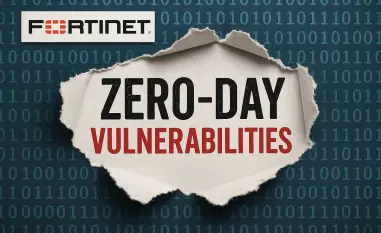What happens when a trusted guardian of data turns into a gateway for attackers? In an era where cyber threats loom larger than ever, recent discoveries in Commvault software—a backbone for data protection in countless enterprises—reveal a chilling vulnerability that could spell disaster. These flaws allow hackers to execute remote code without any authentication, potentially compromising entire systems overnight. This isn’t just a glitch; it’s a critical warning for organizations worldwide to act before disaster strikes.
The Stakes Couldn’t Be Higher
Commvault, relied upon by industries for backup and recovery, has become a prime target due to its central role in safeguarding sensitive information. With ransomware attacks costing businesses billions annually—$20 billion globally in 2024 alone, according to Cybersecurity Ventures—these vulnerabilities aren’t a minor inconvenience. They represent a direct threat to operational integrity, exposing unpatched systems to unauthorized access and devastating breaches.
The urgency stems from the nature of these flaws: pre-authentication remote code execution (RCE). Discovered by watchTowr Labs researchers earlier this year, the issues affect versions prior to 11.36.60. If left unaddressed, they could allow attackers to bypass security measures entirely, making this a pressing concern for IT teams everywhere. The risk isn’t theoretical; it’s a clear and present danger demanding immediate attention.
Unmasking the Hidden Threats in Commvault
Diving into the specifics, four critical vulnerabilities have been identified, each carrying significant severity scores on the CVSS scale. These include CVE-2025-57788 (CVSS: 6.9), which permits unauthenticated API calls, and CVE-2025-57789 (CVSS: 5.3), exploiting unchanged default admin credentials. Additionally, CVE-2025-57790 (CVSS: 8.7) introduces a path traversal flaw for unauthorized file access, while CVE-2025-57791 (CVSS: 6.9) enables command-line argument manipulation.
Even more alarming is how these flaws can be chained together. Attackers can combine them into two distinct pre-auth RCE exploit paths—one linking CVE-2025-57791 with CVE-2025-57790, and another weaving together CVE-2025-57788, CVE-2025-57789, and CVE-2025-57790 if default passwords remain. This multi-layered attack potential elevates the threat from concerning to catastrophic.
History adds weight to the concern. A prior Commvault vulnerability, CVE-2025-34028 (CVSS: 10.0), was added to CISA’s Known Exploited Vulnerabilities catalog earlier this year due to active exploitation in the wild. This pattern suggests that threat actors are keenly aware of Commvault as a high-value target, ready to pounce on any unpatched systems.
Voices from the Frontline of Cybersecurity
Experts who uncovered these flaws paint a stark picture of the risks. Sonny Macdonald, a researcher at watchTowr Labs, noted, “Pre-auth RCE in enterprise software like this is a game-changer. It strips away the need for credentials, making exploitation far too easy.” His words underscore the lowered barrier for attackers, turning a complex challenge into a straightforward assault.
Piotr Bazydlo, Macdonald’s colleague, added a broader perspective: “Data protection tools are supposed to be a shield, not a liability. These flaws show how even trusted solutions can become entry points if not secured.” Their insights align with growing industry fears about recurring vulnerabilities in critical software, where a single oversight can unravel years of security efforts.
Beyond individual opinions, the cybersecurity community echoes a unified concern. With prior Commvault exploits already weaponized by attackers within months of disclosure, the consensus is clear: organizations ignoring these warnings risk everything from data theft to full-scale ransomware lockdowns, emphasizing the need for rapid response.
The Real-World Fallout of Ignoring the Risk
Imagine a healthcare provider relying on Commvault to secure patient records, only to find systems hijacked due to an unpatched flaw. Such scenarios aren’t far-fetched—ransomware groups have increasingly targeted critical sectors, with hospitals paying an average of $1.5 million per attack in recent years, per Statista reports. A breach here could halt operations, expose private data, and erode public trust.
Financial institutions face equally grim prospects. A successful exploit could grant attackers access to transaction backups, enabling fraud or market manipulation. The ripple effects of such incidents often extend beyond immediate losses, with regulatory fines and reputational damage compounding the impact over time.
Even smaller enterprises aren’t safe. Many lack dedicated IT security teams, making them slower to patch and more vulnerable to exploit chains like those identified. This disparity in resources highlights a broader challenge: cyber threats don’t discriminate by company size, but the ability to respond often does.
Locking Down the Threat Before It Strikes
Mitigation isn’t just possible—it’s essential. Start by updating to Commvault versions 11.32.102 or 11.36.60, which address all identified vulnerabilities. This step alone closes the door on the most immediate risks, ensuring systems are no longer low-hanging fruit for attackers.
Beyond updates, change any default credentials immediately, as CVE-2025-57789 exploits this common lapse. Audit API access and file system permissions to neutralize entry points tied to CVE-2025-57788 and CVE-2025-57790. Monitoring for unusual activity, particularly command-line anomalies linked to CVE-2025-57791, adds another layer of defense against stealthy intrusions.
Education plays a pivotal role as well. Equip IT staff with knowledge on timely patching and secure configurations to minimize human error. These actionable measures, though simple, form a robust barrier against exploitation, turning a potential crisis into a manageable challenge.
Reflecting on a Battle Fought and Lessons Learned
Looking back, the discovery of these Commvault vulnerabilities served as a stark reminder of the fragility within even the most trusted tools. The collaboration between researchers and industry stakeholders to identify and patch the flaws demonstrated the power of proactive cybersecurity. It was a race against time, with patches rolled out to avert widespread damage.
The broader lesson was undeniable: complacency has no place in data protection. Organizations that acted swiftly to update systems and secure configurations dodged a bullet, while those that delayed faced heightened risks. The episode underscored that vigilance is not optional but a cornerstone of survival in a hostile digital landscape.
Moving forward, the focus shifted toward building resilience. Adopting a mindset of continuous monitoring, investing in staff training, and fostering rapid response protocols became the path ahead. As cyber threats evolved, so too did the need for adaptive defenses, ensuring that past oversights paved the way for stronger, smarter security in the years to come.













